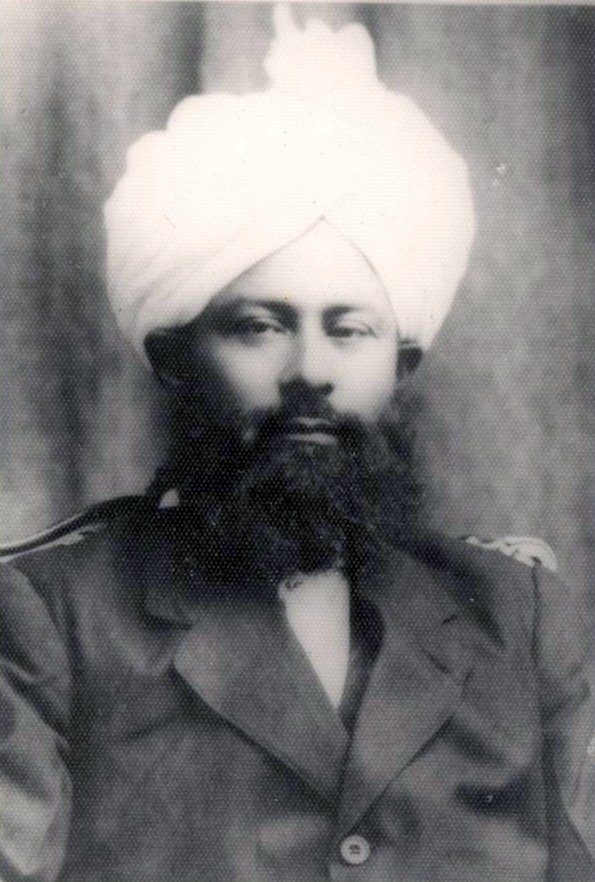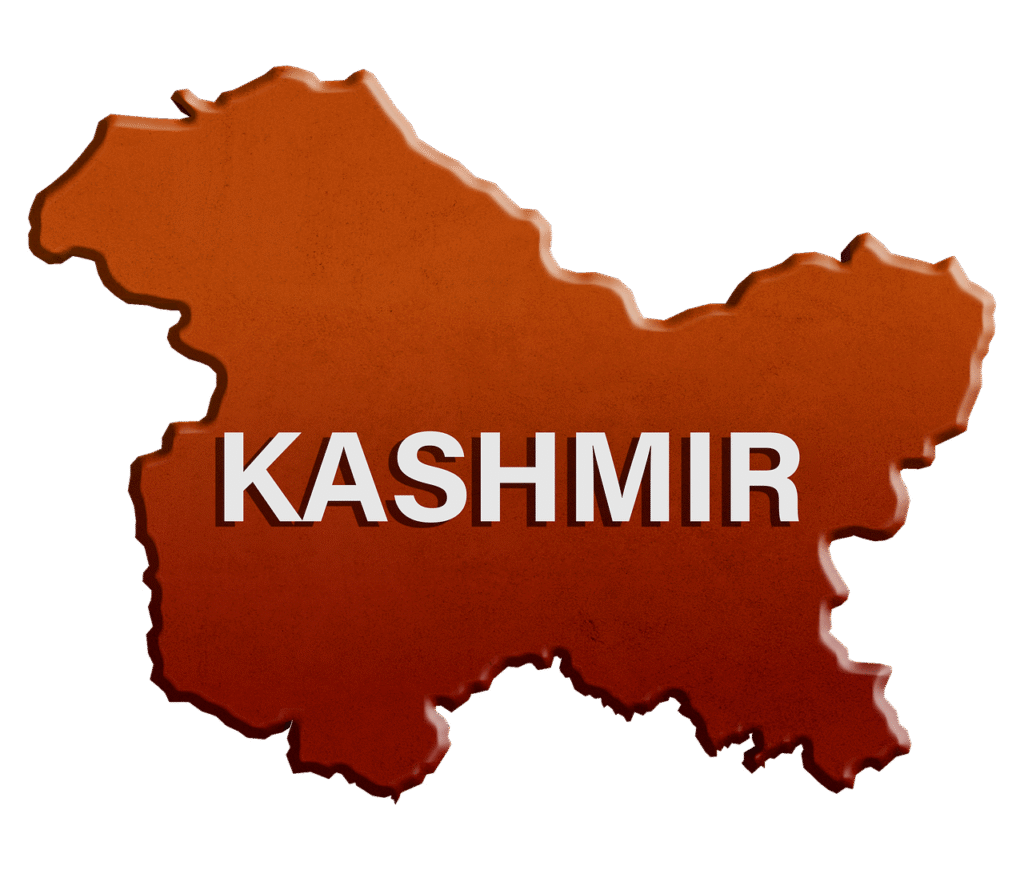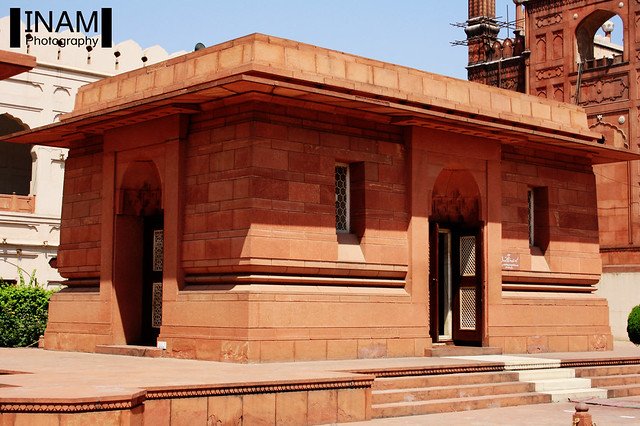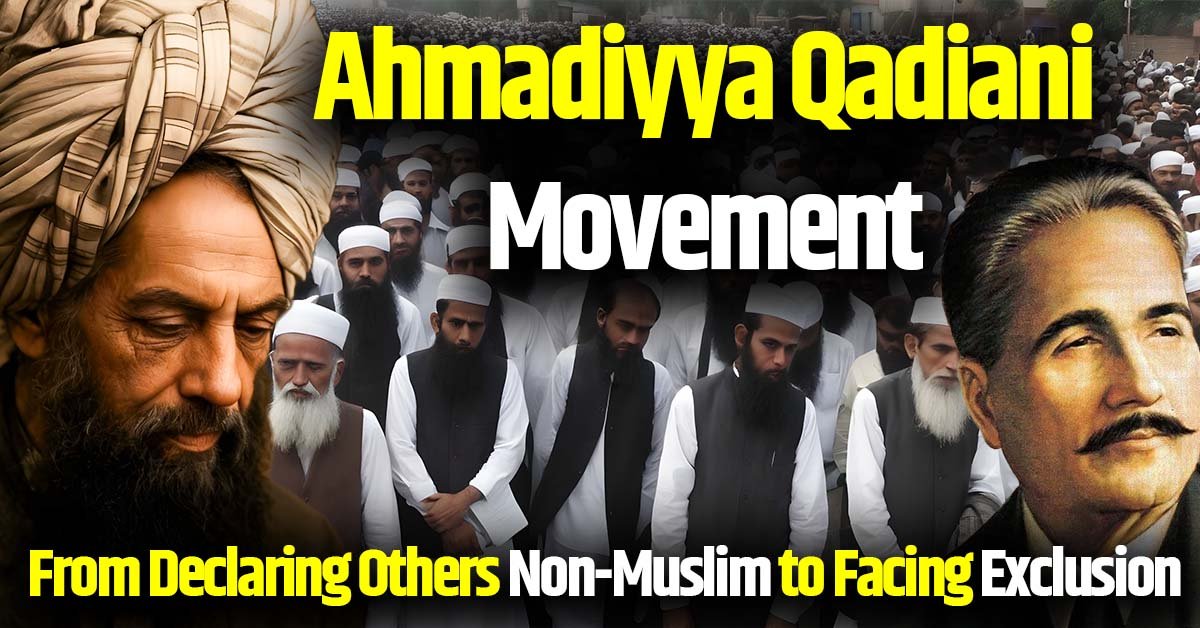Early Doctrines and the Division of the Ahmadiyya Movement (1908–1914)
In 1914, following the death of the first caliph of the Qadiani community, Hakeem Noor-ud-Din, the Ahmadiyya movement split into two factions: the Qadian group and the Lahore group. The Qadian group came under the leadership of Mirza Bashir-ud-Din Mahmood Ahmad, the 25-year-old son of Mirza Ghulam Ahmad and son-in-law of Noor-ud-Din. On the other hand, Maulana Muhammad Ali established a separate organisation named Anjuman Isha‘at-e-Islam, which later became known as the Lahore Ahmadiyya Movement.
According to historian Ayesha Jalal, members of the Lahore group were generally more educated and regarded Mirza Ghulam Ahmad not as a prophet, but as the Promised Messiah and Mahdi. In contrast, Mirza Bashir-ud-Din Mahmood Ahmad, the leader of the Qadian faction, declared that anyone who did not believe in the “shadow prophethood” (zilli nabuwwat) of Mirza Ghulam Ahmad was a kafir (disbeliever) and therefore outside the fold of Islam.
Part I of the article Mirza Ghulam Ahmad’s Life and Claims: Messiah, Mahdi, and Prophet?
The Ahmadis’ Declaration Against Traditional Muslims
By making this declaration, he effectively labelled not only traditional Muslims but also the Lahore Ahmadis as non-Muslims, since the latter refused to recognise Mirza Ghulam Ahmad as a prophet. In response, the Lahore Ahmadiyya group also issued its own statement, asserting that anyone who considered Mirza Ghulam Ahmad a prophet was himself outside Islam. Thus, both factions excommunicated each other on theological grounds, although they generally maintained mutual silence and avoided open confrontation.

As an organised community, the Ahmadiyya movement had, by the early twentieth century, already declared those Muslims who rejected the prophethood of Mirza Ghulam Ahmad as non-believers (kafirs). Decades later, in 1974, the State of Pakistan officially recognised both Ahmadi factions—the Qadiani and Lahore groups—as non-Muslims. Prior to this state declaration, various religious scholars and organisations had already labelled Ahmadis as non-Muslims, either individually or collectively.
Expansion and Consolidation under Mirza Bashiruddin Mahmood Ahmad
To consolidate his authority in Qadian, Mirza Bashir-ud-Din Mahmood Ahmad adopted a highly centralised and strict style of leadership. According to Ayesha Jalal, he ran the Qadian administration in the manner of an “Ahmadi mafia,” which led to internal opposition and dissent within the community.
As Adil Hussain Khan notes, by 1925, Mirza Bashir-ud-Din had sent Ahmadi missionaries across the world to establish preaching centres. Under his direction, Ahmadiyya missions were founded in Europe, America, Africa, Mauritius, Syria, and Palestine, extending the movement’s reach across nearly every continent.
In 1929, a new organisation called Majlis-e-Ahrar was established, bringing together scholars from Barelvi, Deobandi, Ahl-e-Hadith, and even some Shia backgrounds. Its central aim was to form a united front against the Ahmadiyya movement, and its most influential and passionate leader was Syed Ataullah Shah Bukhari, known for his fiery oratory.
The Ahmadiyya Role in the Kashmir Committee and Iqbal’s Reaction
In 1931, communal riots broke out in Kashmir, prompting Muslims in Lahore to form the All-India Kashmir Committee in solidarity with Kashmiri Muslims. The committee included Allama Iqbal, several Muslim leaders, and members of the Ahmadiyya community, such as Mirza Bashir-ud-Din Mahmood Ahmad. On Iqbal’s recommendation, Mirza Bashir was appointed as the committee’s first President, while another Ahmadi, Abdul Rahim Dard, became Secretary.

According to Adil Hussain Khan, the Ahmadiyya community’s involvement in the Kashmir cause was partly religious and historical. They believed that Jesus (Hazrat Isa) was buried in Kashmir; the first Ahmadi Khalifa, Hakeem Noor-ud-Din, had once served as a royal physician at the Kashmiri court; and Mirza Bashir himself had made several visits to the region. Consequently, the community was already engaged in missionary activities there. However, Ayesha Jalal notes that despite these efforts, by that time only 67 individuals in Kashmir had embraced Ahmadiyyat.
The inclusion of Ahmadis in the committee—especially giving its presidency to Mirza Bashir—provoked strong criticism from Ataullah Shah Bukhari, who accused Allama Iqbal of endangering the future of Islam in India by aligning with “Ahmadi infidels.” Jalal mentions that Iqbal, who respectfully called Bukhari “Pir Ji”, was sharply rebuked by him for this decision.
Between 1931 and 1932, when Muhammad Ali Jinnah had temporarily withdrawn from politics and moved to London, Chaudhry Zafarullah Khan briefly served as President of the All-India Muslim League and represented Indian Muslims at the Round Table Conference. This move sparked strong protests from Majlis-e-Ahrar, which already viewed Ahmadis with suspicion.
Allama Iqbal’s Theological Break with the Ahmadis
Soon afterwards, disagreements emerged within the Kashmir Committee, leading Mirza Bashir-ud-Din Mahmood Ahmad to resign from its presidency. Allama Iqbal was then appointed interim president, but he resigned after the very first meeting. Iqbal argued that Ahmadi members followed the directives of their Khalifa rather than the committee’s collective decisions, and therefore, a new committee should be formed without Ahmadi representation.

A few months later, Pandit Jawaharlal Nehru wrote to Allama Iqbal, asking whether Ahmadis should be considered part of Islam or a separate religion. In his detailed response, Iqbal asserted that the Ahmadis were outside the fold of Islam. He explained that once he discovered Mirza Ghulam Ahmad’s claim to prophethood, and his assertions that placed him on par with or even above Prophet Muhammad (peace be upon him) in certain instances, he realised the true nature of his movement.
Within the Ahmadiyya community, it is often believed that Allama Iqbal and his family once adhered to Ahmadi beliefs. However, Ayesha Jalal disputes this claim. Her research shows that while Iqbal was initially sympathetic to Mirza Ghulam Ahmad’s anti-Christian missionary efforts, and even sent his son Aftab Iqbal to study in Qadian, neither Iqbal nor his immediate family ever converted to Ahmadiyyat—though some of his cousins and uncles did.
In 1934, Sir Zafrullah Khan, an active member of the Ahmadiyya community, was appointed to the Viceroy’s Council in British India. The Majlis-e-Ahrar demanded that this “kafir” be removed from the council. Later, Zafrullah Khan was appointed by the Quaid-e-Azam as Pakistan’s first Foreign Minister.
Political Alignments and the Pakistan Movement
In 1936, the Ahrar demanded that all Muslim organisations, including the Muslim League, expel Ahmadis. When the Muslim League refused, the Ahrar left the League and joined the Congress, and some of them began to call the Quaid-e-Azam “kafir-e-azim” (the great unbeliever) in reaction.
The Ahmadiyya community neither officially supported nor opposed the Lahore Resolution (23 March 1940), although it is said that Sir Zafrullah Khan was among those who helped draft the resolution.
Until 1945, the Ahmadiyya movement remained politically neutral between the Muslim League and the Congress and generally supported a united India. However, in the 1945–46 elections, many Ahmadis—especially in Punjab—backed Muslim League candidates, which strengthened the League’s Muslim vote bank to some degree.

When the creation of Pakistan became imminent in 1946–47, Mirza Bashir-ud-Din Mahmood Ahmad openly supported the demand for Pakistan and instructed the community:
“Do not become an obstacle to the creation of Pakistan; instead, help wherever possible.”
On 13 November 1946, Mirza Bashir publicly declared that if the British government acted against the Muslim League, such action should be regarded as an attack on the Muslim nation, and the Ahmadiyya community would stand with the Muslim nation.
After the creation of Pakistan, the Ahmadiyya leadership moved its headquarters from Qadian (in Gurdaspur, India) to Rabwah (Chiniot, Pakistan).
In June 1948, the Majlis-e-Ahrar declared its loyalty to Pakistan but refused to join the Muslim League, accusing the League of being too lenient toward the Ahmadis.
The Jinnah Funeral Controversy and Growing Hostility
Following Quaid-e-Azam Muhammad Ali Jinnah’s death in 1948, Sir Zafrullah Khan, the Ahmadi Foreign Minister of Pakistan, did not participate in Jinnah’s funeral prayer and stood aside. This act deeply offended public sentiment, as many people felt that the country’s Foreign Minister had disrespected the founder of the nation.
According to Adil Hussain Khan, Zafrullah Khan refused to join the prayer because it was being led by Maulana Shabbir Ahmad Usmani of the Deobandi school, who had earlier declared Ahmadis infidels (kafirs) and even liable to be killed in one of his pamphlets. Another reason was that many people themselves did not consider Zafrullah Khan’s participation in the funeral prayer religiously acceptable. Therefore, he refrained from praying behind Usmani.

In 1949, the Majlis-e-Ahrar once again began demanding that the Government of Pakistan officially declare the Ahmadis as non-Muslims. Their campaign primarily targeted Mirza Ghulam Ahmad, Mirza Bashiruddin Mahmood Ahmad, and Foreign Minister Sir Zafrullah Khan.
Through their preaching campaigns, the Ahrar spread anti-Ahmadi propaganda across towns and villages. As a result, Ahmadi missionaries faced severe resistance during their outreach efforts, and in some cases, they were even killed while preaching.
In 1952, the Ahmadiyya Community held a large conference in Karachi, attended by Foreign Minister Zafrullah Khan, who delivered a passionate speech in defense of the Ahmadi faith. He stated that Mirza Ghulam Ahmad had not altered Islam, but rather revived and renewed it, adding that without Ahmadiyyat, Islam would become like a dry and weakened tree.
His remarks caused a wave of outrage across the country, particularly in Karachi. The press, the public, and even some members of the secular intelligentsia condemned the statement, arguing that a government official should not promote or defend a particular religious sect. Critics also claimed that his actions violated the principle of separation between religion and the state.
The 1953 Anti-Ahmadi Riots
Around the same time, another group called the Majlis Tahaffuz Khatm-e-Nubuwwat (Movement for the Protection of the Finality of Prophethood) emerged alongside the Majlis-e-Ahrar. Because of its strong anti-Ahmadi stance, it quickly gained widespread popularity. The well-known newspaper Zamindar gave full media support to both groups, helping them spread their message across the country.
The Majlis-e-Ahrar, together with Maulana Maududi’s Jamaat-e-Islami and several influential Sufi leaders and custodians of shrines, formed a united front against the Ahmadis under the name Majlis-e-Amal (Action Committee).
In January 1953, the Majlis-e-Amal decided to demand that Prime Minister Khawaja Nazimuddin officially declare the Ahmadis outside the fold of Islam. However, the government ignored the demand, fearing that it could lead to sectarian tension and political instability in the newly formed state.
By the end of February 1953, the Majlis-e-Amal announced a civil disobedience movement. At Wazir Khan Mosque in Lahore, the editor of the newspaper Zamindar, Maulana Akhtar Ali Khan, delivered a fiery speech that drew a large crowd. Around ten thousand people joined the protest against the Ahmadis and the government.
Soon after, riots broke out in Lahore and other cities. Ahmadis were attacked, and their properties were looted or destroyed. When the situation went out of control, the Punjab government called in the army, which imposed martial law on March 6, 1953 — the first martial law in Pakistan’s history — to restore order.
Seeing the unrest, several politicians joined the Majlis-e-Amal for temporary political gain. Maulana Maududi was sentenced to death for inciting violence, but his sentence was later commuted in 1955.
Later Leadership and Political Engagement
Due to the rising hostility, Mirza Bashir al-Din Mahmood hired bodyguards for protection. However, in 1954, a 15-year-old boy attacked him with a knife, injuring his neck. The wound never fully healed and troubled him until his death. In his final years, his son Mirza Nasir Ahmad gradually took over leadership and, after his father’s death in 1964, became the third caliph of the Ahmadiyya community.
During this period, Zulfikar Ali Bhutto, then a young and dynamic Foreign Minister, had become increasingly influential in both national and international politics. He projected himself as a progressive and secular leader, appealing to the educated urban classes as well as to the working population. Recognising an opportunity, Mirza Nasir Ahmad, the third caliph of the Ahmadiyya community, sought to establish cordial ties with Bhutto.
In the 1970 general elections, the Ahmadiyya community supported the Pakistan People’s Party (PPP). Following Bhutto’s rise to power as President and later Prime Minister in 1971, several Ahmadis—among them Aziz Ahmad, who served as Foreign Secretary—were included in government positions.
The 1974 Parliamentary Inquiry and Declaration of Non-Muslim Status
However, events took a dramatic turn on 29 May 1974, when students from Nishtar Medical College clashed with Ahmadi youth at the Rabwah Railway Station. The confrontation reportedly began when the students raised slogans in favour of Khatm-e-Nubuwwat (Finality of Prophethood), provoking a violent response from some Ahmadis present at the station.
The Rabwah incident ignited widespread religious unrest and protests across the country. The growing public pressure forced the National Assembly of Pakistan to open a parliamentary debate on what became known as the “Ahmadi question.”
During the 1974 parliamentary hearings, Mirza Nasir Ahmad, the third caliph of the Ahmadiyya community, was summoned to appear before the Special Committee of the National Assembly. The proceedings began with a detailed discussion of his background, beliefs, and leadership, followed by an extensive examination of Mirza Ghulam Ahmad’s theological claims—including his assertions of being the Promised Messiah and a subordinate (zilli) prophet within Islam.

A central issue during the debate concerned how the Ahmadiyya community regarded other Muslims. When questioned on this point, Mirza Nasir Ahmad acknowledged, based on the writings and teachings of Mirza Ghulam Ahmad and Mirza Bashir-ud-Din Mahmood Ahmad, that anyone who did not accept Mirza Ghulam Ahmad’s prophetic claims was considered outside the fold of Islam and therefore a non-believer (kafir).
In response to a further question—whether a person who believed in the Qur’an and Prophet Muhammad (peace be upon him) but rejected Mirza Ghulam Ahmad’s claim to prophethood could still be regarded as a Muslim—Mirza Nasir Ahmad replied that such an individual was a Muslim only in name but, in essence, a disbeliever.
He was then questioned about several derogatory expressions used by Mirza Ghulam Ahmad in his writings, particularly in Izala-e-Auham and Najm-ul-Huda, where he allegedly referred to his opponents as “thieves, illegitimate, accursed, Satanic, and sons of immoral women.” The members of the committee asked whether such language could be considered appropriate for someone claiming to be a prophet.
In response, Mirza Nasir Ahmad argued that these were not insults in the literal sense, but rather polemical expressions used within the heated religious debates of that era. According to him, they were contextual reactions to verbal attacks from opponents, not personal abuses.
Another question raised during the session concerned the creation of a separate Ahmadi calendar. If Ahmadis considered themselves Muslims, members asked, why had they established their own religious calendar, distinct from the traditional Hijri (Islamic) calendar—and why had Mirza Bashir-ud-Din Mahmood Ahmad requested that the British government classify Ahmadis as a separate community, similar to Parsis or Christians?
Mirza Nasir Ahmad replied that the Hijri calendar remained in use, but Ahmadis had simply chosen to design their own calendar and assign new names to its months, as a symbolic expression of their community’s identity.
When Mirza Nasir Ahmad was asked about Mirza Ghulam Ahmad’s claim of being the Promised Messiah—sent to revive Islam and spread it across the world—committee members questioned how this claim could be justified, given that no major Islamic revival or global expansion had occurred during his lifetime, and that most Muslim states at the time were in decline.
In response, Mirza Nasir Ahmad stated that “the mission of our Mahdi and Messiah extends until the Day of Judgment.” He further added, “I firmly believe that within the next three centuries, Islam—particularly Ahmadiyyat—will spread throughout the world, including the United States.”
The committee then raised another question: why had Mirza Ghulam Ahmad declared jihad unlawful (haram) for Muslims?
Mirza Nasir Ahmad explained that during Mirza Ghulam Ahmad’s time, the British government did not interfere in matters of religion, and therefore armed struggle against it could not be considered a religious duty. However, he clarified that in future eras, if the conditions for jihad—as defined in Islamic law—were ever met again, jihad could indeed be undertaken.
At the conclusion of the 1974 parliamentary proceedings, Pakistan’s Attorney General, Yahya Bakhtiar, delivered his final remarks, noting that although the Ahmadiyya community’s religious system was distinct, its members were still citizens of Pakistan and must be granted full civil rights. He emphasised that no citizen of Pakistan could be treated as second-class on the basis of faith.
However, following the completion of the proceedings, the National Assembly unanimously passed a resolution declaring both the Qadiani (Ahmadi) and Lahori Ahmadi groups to be non-Muslims under the Constitution, on the basis of their beliefs, and prohibiting them from identifying as Muslims.
The Zia Ordinance of 1984 and the Globalisation of the Community
During General Zia-ul-Haq’s regime, in 1984, further restrictions were imposed through a Presidential Ordinance (commonly referred to as Ordinance XX). This law made it a criminal offence for Ahmadis to call themselves Muslims, use Islamic terminology (such as mosque, azan, or salaam), or publicly practise Islamic rituals. Violations were punishable by up to three years’ imprisonment and fines.
These measures effectively curtailed the Ahmadis’ freedom of religion, forcing them to withdraw from public religious expression. In response, Mirza Tahir Ahmad, the fourth Caliph of the Ahmadiyya community, moved the movement’s international headquarters from Rabwah (Pakistan) to London, where it remains today.
Within the Qadiani branch of the Ahmadiyya community, the position of the Caliph (Khalifa) holds supreme authority. According to Ahmadi belief, although the Caliph appears to be elected by representatives of the community, in reality, his selection is considered divinely ordained. Ahmadis believe that the Caliph cannot commit an error, as he is guided directly by God, and therefore cannot be removed from office.
While the Caliph may suffer from physical illness, his mental and spiritual capacities are believed to remain unaffected, since he is viewed as being chosen by divine will. Within the community, he is often regarded as the spiritual monarch of a transnational, non-territorial “state”, leading the community’s global network.
Although the Caliph consults with an advisory council (Majlis-e-Shura), the final decision-making authority always rests with him.
Doctrinally, the Ahmadi faith prohibits Ahmadi women from marrying non-Ahmadis, whereas Ahmadi men may marry outside the community, particularly with non-Ahmadi Muslim women.
The Ahmadiyya community claims a global population of 10 to 20 million, with the largest concentration in Pakistan, estimated between 600,000 and 4 million. However, according to the 2017 Pakistan national census, only 192,000 individuals identified themselves as Ahmadis.
Ahmadiyya Qadiani Movement: Conclusion
The history of the Ahmadiyya Movement encapsulates the deep tensions between religious reform, identity, and political power in modern South Asia. The movement’s initial insistence that non-Ahmadis were outside Islam created a theological exclusivism that would later be mirrored in its own state-sponsored exclusion in Pakistan.
From its early schisms and global missionary work to its political engagement in the Pakistan Movement and eventual legal marginalisation, the Ahmadiyya story reflects the broader struggle within Muslim societies to define orthodoxy and citizenship in the modern age.
The constitutional and legal measures taken against the Ahmadis reveal how theological debates can transform into instruments of political mobilisation, leaving long-lasting effects on national identity and minority rights.
While the Ahmadiyya community continues to expand globally with its headquarters in London, its followers in Pakistan still live under severe legal and social restrictions—caught between faith, identity, and state politics.
Barelvi-Deobandi Divide: History, Origins, and Key Debates in Indian Sunni Islam
The Sunni–Shia Divide in Islam | History, Origins, and Important Events
References
- Jalal, Ayesha. Self and Sovereignty: Individual and Community in South Asian Islam Since 1850. Routledge, 2000.
- Khan, Adil Hussain. From Sufism to Ahmadiyya: A Muslim Minority Movement in South Asia. Indiana University Press, 2015.
- Lavan, Spencer. The Ahmadiyah Movement: A History and Perspective. Manohar Publishers, 1974.
- Friedmann, Yohanan. Prophecy Continuous: Aspects of Ahmadi Religious Thought and Its Medieval Background. University of California Press, 1989.
- Qasmi, Ali Usman. Questioning the Authority of the Past: The Ahl-i-Quran Movements in Punjab. Oxford University Press, 2011.
- Government of Pakistan. Proceedings of the National Assembly Special Committee on the Qadiani Issue (1974). Islamabad Archives.
- Khan, Zia-ul-Haq. Ordinance XX and Its Impact on Religious Freedom in Pakistan. Lahore Law Review, 1985.
- Valentine, Simon Ross. Islam and the Ahmadiyya Jama’at: History, Belief, Practice. London: Hurst & Company, 2008.
- Gualtieri, Antonio R. Conscience and Coercion: Ahmadi Muslims and Orthodoxy in Pakistan. Montreal: Guernica Editions, 1989.
- Ahmad, Bashir-ud-Din Mahmud. The Way of the Seekers (Al-Wasiyyat). London: Islam International Publications, 2004.
- Pakistan Bureau of Statistics. Population and Housing Census 2017. Islamabad: Government of Pakistan, 2018.

